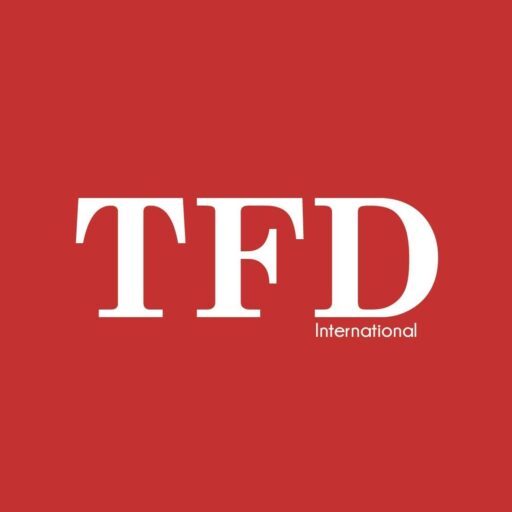In recent weeks, tensions between Iran and Israel have escalated sharply – marked by missile exchanges, strikes on nuclear sites, and threats to critical shipping lanes. Western media has voiced concern over the fragility of Iran’s leadership and the wider regional order.Yet amid this turbulence stands Ayatollah Ali Khamenei, who presented a clear message not only to Iranians but to the Muslim world: strong leadership grounded in unity and self-reliance is non-negotiable.strength, unity, and economic sovereignty are the foundations of resilience.
Bold Defiance – Leadership Through Principle: On June 23, Khamenei issued a firm declaration following Israeli strikes: Iran “will not submit to any harassment”.Such defiance is more than stance – it’s intentional leadership psychology. It asserts resilience, restores pride, and resonates in a Muslim World that often feels geopolitically weak.
Rituals as Platforms: Khamenei has artfully used religious events to push his directive for unity. At the May Hajj, he emphasized the spiritual act’s political power – suggesting that true unity could have precluded the crises in Gaza and Yemen. During Eidul Fitr, he reminded ambassadors that disunity serves as an invitation to foreign coercion. By merging faith and geopolitics, he elevates rituals into instruments of political direction.
Division as Weakness – A repeated warning: sectarian and regional divisions leave Muslims vulnerable to exploitation. Khamenei argues that unity signals strength and deters intimidation from global powers. He frames unity not as idealism, but as essential insurance guard.
From Words to Strategy: Khamenei’s appeals aren’t merely aspirational – they’re embedded in diplomatic outreach. In late May, he urged Pakistan’s leadership to amplify its support for Gaza and reject normalization with Israel.The transformation from sermonic ideals to regional coordination underscores his strategic emphasis on action, not just rhetoric.
Institutional Structure Behind Authority: Khamenei’s influence flows through tightly knit institutions – IRGC, media, judiciary, and the Supreme Leader’s office – allowing swift translation of ideology into action.This institutional reinforcement makes his proclamations operational, not symbolic.
Economic Resilience – Pillar of Leadership: A compelling dimension of Khamenei’s leadership is his advocacy of the “resistance economy.” Originally introduced in 2012, this economic model is designed to withstand sanctions, bolster domestic growth, and assert economic sovereignty. Its relevance extends far beyond Iran, offering a blueprint for Muslim-majority countries seeking independence and resilience.
Core Principles:
1. Domestic Production: Emphasis on agriculture, medicine, food, and technology to reduce reliance on imports.
2. Knowledge-Based Growth: Encouraging science-driven innovation, entrepreneurship, and tech parks to create modern economies.
3. Diversified Exports: Prioritizing petrochemicals, electricity, and gas over crude oil to circumvent sanctions.
4. Anti-Corruption and Structural Reform: Strengthening institutional frameworks for transparency and fairness.
5. Jihad of Reconstruction: Framing economic self-sufficiency as a moral and religious duty.
Why It Matters:
= Economic Independence – Political Freedom: Supporting industries like pharmaceuticals and tech reduces vulnerabilities.
= Shared Growth, Shared Stability: Interdependence among Muslim nations can create stronger, networked economies.
= Religious Legitimacy Meets Governance: Framing economic resilience as an Islamic duty helps align policy with public morality.
Conclusion – A Model for the Ummah: Despite the promise, the resistance economy faces real challenges; internal dissent over corruption, inflated living costs, and stalled reforms has weakened public faith. Likewise, centralized efforts by the IRGC, while efficient, can overshadow private sector vitality, creating monopolistic tendencies.
Yet these obstacles also illustrate lessons: unity must include accountability; leadership must balance control with opportunity. Muslim leaders can apply these insights to design economies that resist external pressure while empowering citizens.
Khamenei’s leadership during this crisis offers a pointed reminder to Muslim nations:
= Leadership must be secure and assertive. Public defiance reinforces collective confidence.
= Unity is strategic, not just symbolic. Rituals, diplomacy, and joint initiatives reinforce communal bonds.
= Economic resilience is essential. An independent, value-driven economy underpins sovereign power.
When embraced holistically, these principles form a guidebook for Muslim-majority countries: build unity, anchor it in faith-rich symbolism, bolster it with institutions, and sustain it through economic autonomy.
The wake-up call is simple yet urgent: The Ummah’s future depends not just on shared prayers, but on shared strength – economic, political, and moral. Khamenei has demonstrated the blueprint. Now, Muslim nations must choose whether to adopt it – or remain vulnerable and fractured.





